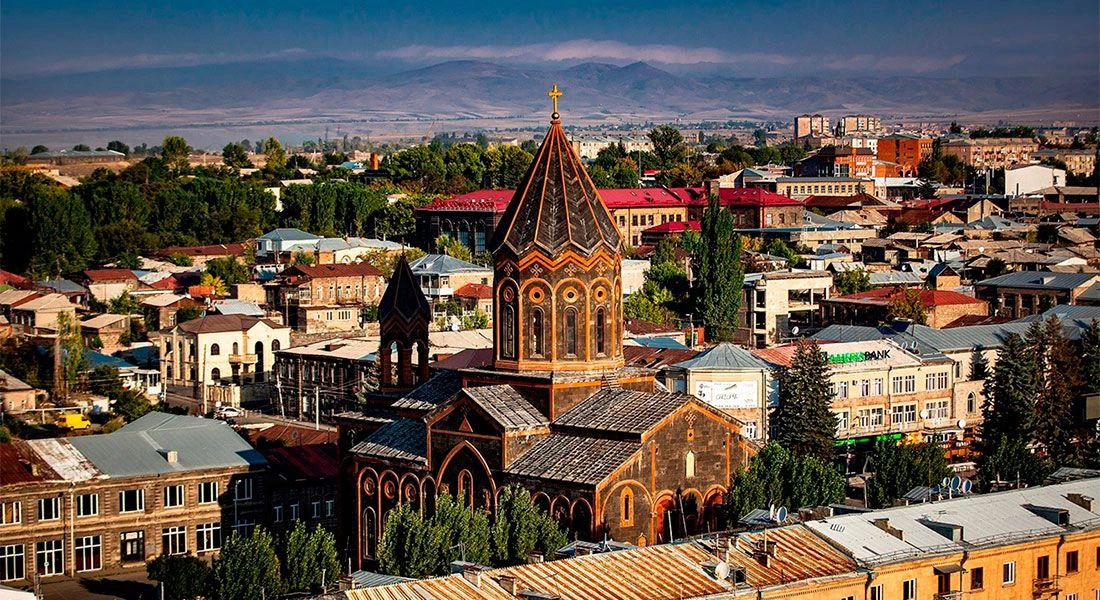Gyumri, Armenia’s second largest city, lies on the Shirak Plateau in the country’s northwest and carries with it the weight of centuries of history and culture. Often referred to as the cultural heart of Armenia, it is a place where tradition, architecture, art, and resilience meet. Unlike the capital Yerevan, which was reshaped during the Soviet era, Gyumri has preserved much of its original identity, giving visitors the rare chance to experience the atmosphere of a genuine Armenian city as it stood in the past.
The Historic Soul of the City
The soul of Gyumri can be felt most strongly in its historic district known as Kumayri. This part of the city is an architectural treasure, with hundreds of stone houses, workshops, and public buildings dating from the eighteenth and nineteenth centuries. Walking through its narrow streets, one encounters carved facades, wooden balconies, and courtyards that speak of a time when Gyumri was a thriving trade and cultural hub. Every corner feels like an open-air museum, yet the district is not frozen in time. It is alive with galleries, cafés, workshops, and homes that make it both historic and contemporary.
The Beating Heart: Vartanants Square
At the center of the city lies Vartanants Square, a wide and open space that serves as the meeting point for locals and visitors alike. The square is framed by impressive civic and religious buildings, including the Holy Saviour’s Church with its soaring dome and twin towers that dominate the skyline. The church itself is a symbol of the city’s endurance, having survived Soviet neglect and the devastating 1988 earthquake before being restored to its former beauty. Around the square, one can sense the pulse of the city as people gather, children play, and cultural events take place, creating an atmosphere of warmth and community.
The Black Fortress
Just beyond the center, on a hill overlooking Gyumri, stands the Black Fortress, a round stronghold built in the nineteenth century from dark volcanic stone. Though it was constructed for defense, it never witnessed major battles, and today it stands more as a monument to the city’s strategic importance in the region. From its walls, the views stretch across the plains and mountains, giving visitors a sense of Gyumri’s place in the Armenian landscape. The fortress has taken on a new life as a venue for concerts and exhibitions, bridging its military past with its modern cultural role.
A City of Museums and Artists
Gyumri is a city of artists, poets, and craftsmen. Its museums and galleries capture this creative spirit. The Dzitoghtsyan House-Museum of National Architecture and Urban Life recreates the daily life of the nineteenth century, showing how families lived, worked, and celebrated. The Gallery of the Aslamazyan Sisters honors two pioneering female artists, whose works reflect both Armenian tradition and modern influences. Other museums dedicated to poets, painters, and sculptors highlight Gyumri’s role as a cradle of culture and creativity.
Culinary Traditions
The city’s cultural richness is matched by its culinary traditions. Gyumri is known for its hearty cuisine, rooted in the farming and pastoral life of the Shirak region. Local dishes are often simple but full of flavor, prepared in ways that have been passed down through generations. To eat in Gyumri is not simply to enjoy food, but to experience part of its heritage. Shared meals become a way for visitors to connect with the rhythm of the city and the warmth of its people.
Resilience and Spirit
What makes Gyumri unforgettable, however, is not only its monuments or its cuisine, but its spirit. The city suffered greatly in the 1988 earthquake, when thousands of lives were lost and large parts of its infrastructure were destroyed. Yet despite this tragedy, Gyumri rebuilt itself with resilience and determination. The scars of the past remain, but they are part of a larger story of survival and hope. Visitors often remark on the humor and hospitality of the local people, who, despite hardships, remain known throughout Armenia for their wit, creativity, and generosity.
Conclusion
Gyumri is therefore not simply a stop on a journey through Armenia. It is a city where history is visible in the stones of its streets, where culture thrives in museums and workshops, where food and hospitality reflect centuries of tradition, and where the strength of its people gives meaning to its name as a cultural capital. To visit Gyumri is to step into a city that has endured and continues to inspire, a place that offers travelers not only sights to admire, but emotions and stories to carry with them long after they leave.

